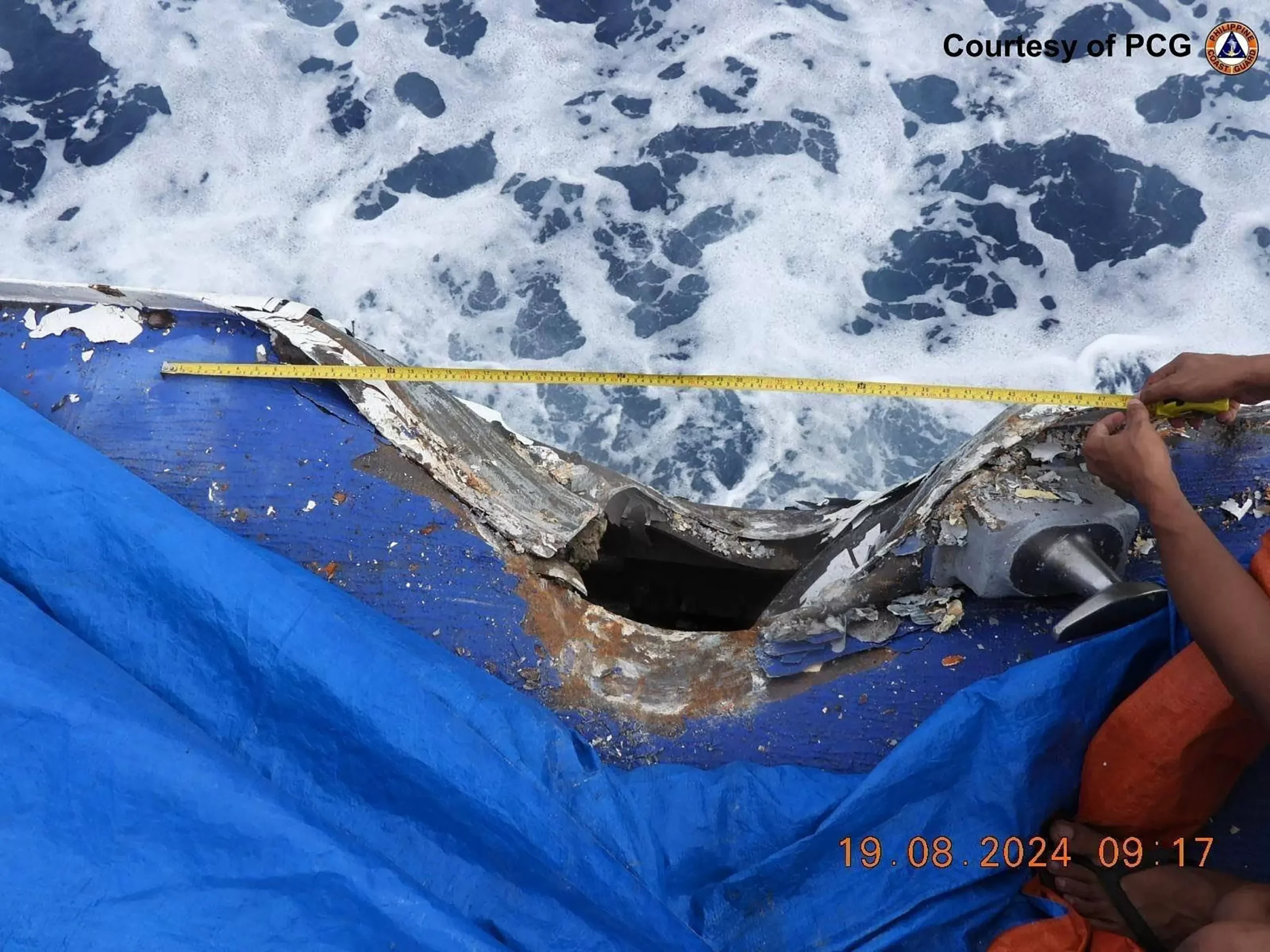The Philippines and China have once again found themselves at odds, with both countries accusing each other of aggressive actions in the South China Sea. This latest incident has raised tensions in the region and has once again sparked concerns about the ongoing territorial disputes between the two nations.
On Monday, the Philippines accused China of ramming a Filipino fishing boat in the waters near the Scarborough Shoal. According to the Filipino fishermen, the Chinese vessel deliberately hit their boat, causing damage and putting their lives in danger. The Philippine government has condemned this act as a violation of international law and has called for China to take responsibility and ensure the safety of all vessels in the area.
However, China has denied these allegations and instead accused the Philippines of performing dangerous maneuvers in the South China Sea. Chinese Foreign Ministry spokesperson, Geng Shuang, stated that the Filipino fishing boat was actually the one at fault for sailing too close to a Chinese fishing vessel, which resulted in a collision. He also accused the Philippines of constantly provoking China in the disputed waters and urged them to stop their “illegal activities”.
This latest incident is just one of many in the ongoing dispute between the Philippines and China over the South China Sea. The two countries, along with several other nations, have overlapping claims in the area, which is rich in natural resources and is a major trade route. The Philippines have been vocal in their opposition to China’s claims, which they believe are in violation of international law. China, on the other hand, has been asserting its dominance in the region and has been accused of building military installations on disputed islands.
The tension between the two nations has been ongoing for years and has often resulted in confrontations at sea. In 2012, China took control of the Scarborough Shoal, which was previously under the jurisdiction of the Philippines. This sparked outrage and protests in the Philippines, leading to a standoff between the two countries. In 2016, an international tribunal ruled in favor of the Philippines, stating that China’s claims in the South China Sea had no legal basis. However, China has refused to recognize the ruling and has continued to assert its dominance in the region.
The recent incident has once again highlighted the need for a peaceful resolution to the territorial disputes in the South China Sea. Both the Philippines and China must work towards finding a diplomatic solution and avoiding any further confrontations. The safety of all vessels and the livelihood of fishermen in the area must be a top priority for both nations.
It is also important for other countries to play a role in resolving this issue. The United States, for instance, has been vocal in its support for the Philippines and has conducted regular patrols in the South China Sea to uphold freedom of navigation. However, it is crucial for all parties involved to approach this issue with a level head and avoid any actions that may escalate the situation.
The Philippines and China have a long history of friendship and cooperation, and it is in the best interest of both nations to maintain this relationship. The South China Sea dispute should not hinder the progress and development of the region. Instead, it should be seen as an opportunity for both countries to work together towards a peaceful and mutually beneficial solution.
In conclusion, the recent incident in the South China Sea between the Philippines and China is a cause for concern. Both countries have accused each other of aggressive actions, further escalating tensions in the region. It is imperative for both nations to engage in constructive dialogue and find a peaceful resolution to the ongoing territorial disputes. The safety of all vessels and the livelihood of fishermen must be a top priority, and other countries must also play a role in promoting peace and stability in the region. Let us hope that this incident will serve as a wake-up call for all parties involved to work towards a peaceful and amicable solution.




![Complete BritRail Pass Guide [Types, How to Use It, Pros + Cons]](https://inside-news.uk/wp-content/uploads/2025/06/00221EB4-BCA2-4DBB-6CD4-83DBC37D71FA-120x86.webp)
















